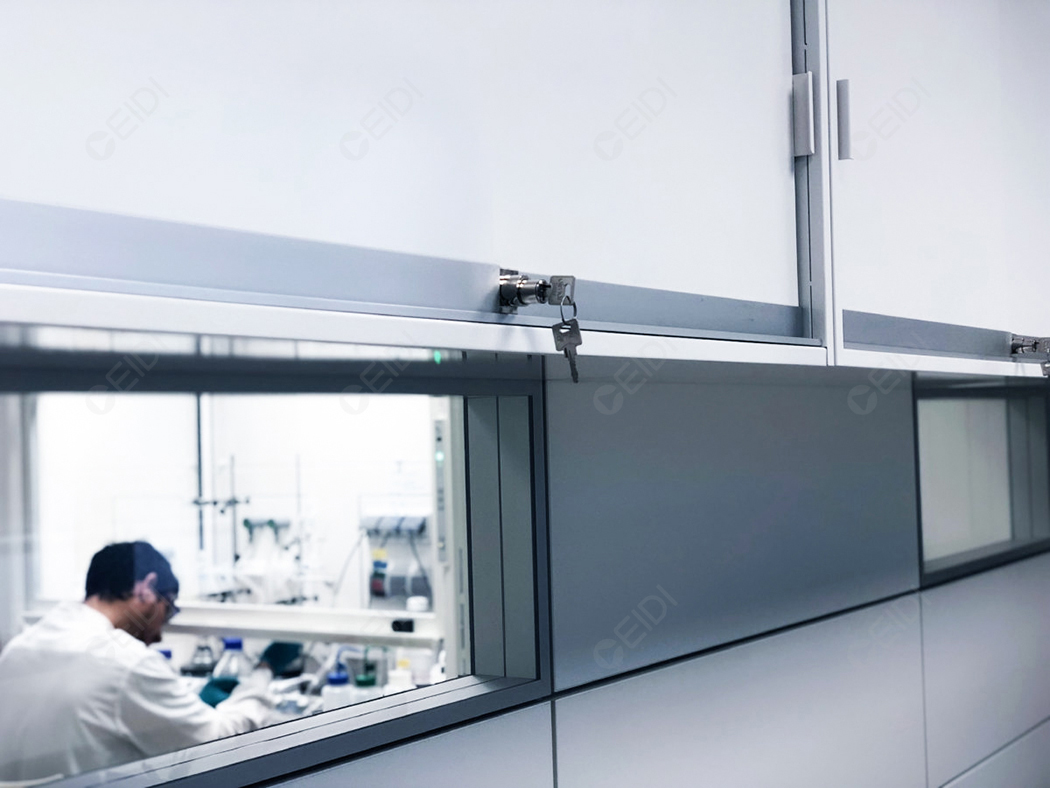Welcome to the official website of Xidi laboratory, the laboratory design and decoration recognize Xidi!
|
|
Home >> News >> Technology
文章出处:Technology|阅读量:890|发表时间:2021-02-25
The scope of microorganisms is very broad and closely connected with humans. It is understood that in the textbooks of mainland China and Taiwan, microorganisms are divided into eight categories: viruses, actinomycetes, fungi, bacteria, spirochetes, mycoplasma, chlamydia, and rickettsiae. In the application field, leather, food, brewing, agriculture, textile, chemical and petroleum, antibiotics, medicine and health and vitamin production, genetic engineering, sewage treatment and other industries and fields have a wide range of applications. Microbial experiment is mainly aimed at the separation, cultivation, breeding, identification, morphology, variation, utilization, and harm of microorganisms.
1. Composition of Microbiology Laboratory
The composition of the microbiology laboratory generally includes: preparation room, microbial culture room, equipment disinfection and cleaning room, pure water room, testing room, bacteria room, storage room, etc. The composition and scale of microbiology laboratories vary greatly according to the field of work (food, medical, pharmaceutical) and nature (teaching, research, production, monitoring, etc.).
2. Layout of Microbiology Laboratory
The microbiology laboratory should be set up as an independent area, separated from other laboratories, the door should be equipped with access control, non-related personnel should not enter, and each room should be reasonably arranged according to the work content, which is convenient for work and does not affect each other. A centralized dressing room is set at the entrance, and the culture room can be set up according to different culture conditions and types (such as bacteria culture room, mold culture room, liquid culture room, solid culture room, etc.).
1. Clean laboratory: It is a self-contained area, arranged at the side corner of the laboratory, with a sealed threshold for the entry and exit of personnel, set the room with cleanliness requirements in a place with less personnel interference, and set the auxiliary room outside. Considering the microbiological test operation process, the detection room is adjacent to the washing and disinfection room and the cultivation room to facilitate the separation of the flow of people and the material. In order to control the entry and exit of personnel, only one sealed door is provided to enter the main clean area of the microbiology laboratory. The operator enters the corridor and then enters the preparation room, and enters the operation area through the first shift, the second shift and the buffer from the preparation room. Logistics is realized from the delivery window. The air outlet is equipped with a high-efficiency filter, and the air outlet is equipped with a high-efficiency filter static pressure box. The indoor air supply and exhaust adopts the method of upper delivery and lower exhaust. The indoor air exhaust is arranged on one side without obstacles. The residual pressure valve automatically adjusts the pressure in the room to keep the positive pressure clean.
2. Incubator: It is mainly equipped with various incubators, shakers, and requires a constant temperature and sufficient power supply.
3. Preparation room: The laboratory benches and reagent cabinets must be insulated and heat-resistant, and the laboratory benches must be resistant to water and corrosion; set up mountain water devices, design crushing, screening and other operations, and must be equipped with corresponding equipment. Partial exhaust, set up exhaust cabinet.
4. Washing room: The size of the washing room is determined according to daily work. Generally, it is not less than a single room. The location of the washing room should be close to the cultivation room. The water supply and drainage facilities are complete. The washing table must be heat-resistant and acid-resistant. Side tables, etc., the ground should have a good drainage slope and floor drain.
3. Commonly used equipment in microbiology laboratory
1. Ice maker.
2. Nitrogen determination device
3. Bacteria identification system.
4. Microscopic image analysis system.
5. Point distilled water device, ultra-pure water machine.
6. Conductivity meter: mainly used to measure water quality.
7. Acidity meter: used to determine the pH value of the solution.
8. Drying box: electric heating drying box, vacuum drying box.
9. Centrifuge: low-speed centrifuge, desktop high-speed centrifuge.
10. Sterilizer: high pressure steam sterilizer, dry heat sterilizer.
11. Balance: ±0.1mg analysis, ±10mg electronic balance.
12. Constant temperature water bath, stirrer, ultrasonic cleaning machine, electric heating plate.
13. Refrigerators: low-temperature refrigerators, ultra-low temperature refrigerators, ordinary refrigerators, vertical refrigerators, etc.
14. Spectrophotometer: visible spectrophotometer, ultraviolet spectrophotometer, used for quantitative analysis.
15. Microscope: biological microscope, stereo microscope, fluorescence microscope, inverted microscope, etc.
16. Incubator: electric heating constant temperature incubator, water-proof constant temperature incubator, biochemical incubator, constant temperature and humidity incubator, anaerobic incubator, light incubator, etc.
17. The sterile room and ultra-clean workbench are the core parts of the laboratory, which mainly provide protection for samples and ensure the accuracy of experimental results. The sterile room provides a relatively sterile working environment for the microbiology laboratory through air purification and space disinfection. The main equipment in the aseptic room includes: transfer window, ultraviolet lamp, strict aseptic room equipped with air chamber, and ultra-clean workbench. The ultra-clean workbench is easy to use, divided into horizontal flow and vertical flow according to the wind direction.

CEIDI’s friendly reminder: According to the work field (food, medicine, medical, etc.) and nature (teaching, production, research, monitoring, etc.) of the microbiology laboratory, the composition and scale of the laboratory are very different, and the design and construction are related For laboratory projects, it must be matched according to the specifications of each level. The microbiology laboratory should be set up as an independent area, separated from other laboratories, with access control at the door, and non-related personnel are not allowed to enter. Each room is reasonably arranged according to the work content, which is convenient for work without affecting each other.